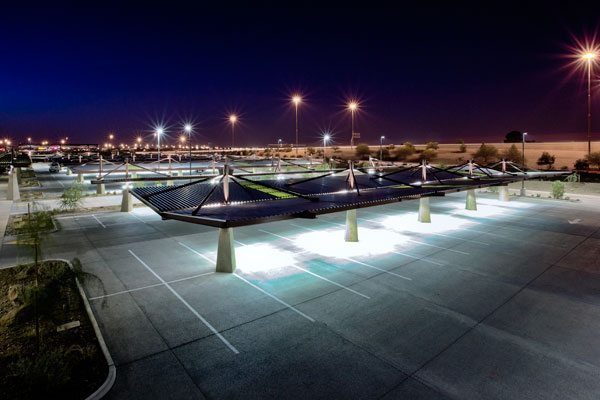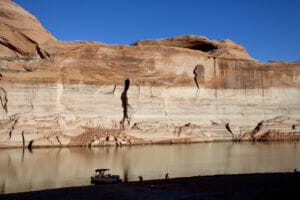Extreme Valley heat may have you pointing an accusing finger down, not upThe Valley is no stranger to high temperatures with its excessive heat advisories and record-setting highs in the summer months. However, a contributing factor that is actually making the Valley even hotter is the reality of the “urban heat island effect.” The “urban heat island effect” is defined as higher temperatures experienced in built-up areas in the Valley as compared to the surrounding rural areas. Part of what’s contributing to the “urban heat island effect,” is the fact that areas in the Valley are simply not cooling off after the sun goes down due to the extreme heat absorbed by the concrete and asphalt in our freeways, roads and parking lots. At night, this heat is slowly re-emitted, keeping temperatures high throughout the evening. In addition to uncomfortable temperatures, this also translates into higher energy bills for consumers. One way to address the Valley’s “urban heat island effect” is pervious concrete, a porous paving system that helps reduce heat build-up by allowing cooler Earth temperatures below the concrete to migrate up. Pervious concrete has been used in building construction since at least the middle of the 19th century. Over the years, the pervious concrete system contributed substantially to the production of new houses in the United Kingdom, Germany, Holland, France, Belgium, Scotland, Spain, Hungary, Venezuela, West Africa, the Middle East, Australia and Russia. After 1946, however, pervious concrete was used for a much broader range of applications, including industrial, public and domestic buildings in areas north of the Arctic Circle, since traditional building materials proved to be not viable.
The concrete also allows for three to eight gallons of water, per square foot, per minute to pass through it, helping the environment in multiple capacities. This type of paving system also helps eliminate water pollution as water infiltrates the soil beneath the pavement, filtering pollutants. The Environmental Protection Agency recognized pervious concrete as a “Best Management Practice” for storm water pollution protection. For developers, this concrete can also be a cost effective solution by eliminating the need for an expensive water retention basin on the property, as water simply drains through the concrete. Phoenix-based Progressive Concrete Works has developed its own pervious concrete called Drainscape. It functions much like sand, which heats up during the daytime when the sun is beating down on it. At night, however, the sand is cool to the touch because it does not retain the heat. Drainscape is recognized by the U.S. Green Building Council’s Leadership in Energy and Environmental Design program for its smaller development footprint on land sites by reducing the amount of land needed to manage storm water. Drainscape is primarily installed in parking lots in commercial developments, and can help contribute to LEED points on virtually any construction project. Mike Riggs is the President Progressive Concrete Works. For more information, visit http://www.drainscape.com. |





